التبديل بين DSLR والتي بدون مرآت؟ Should You Switch from DSLR to Mirrorless?
تقليص
X
-
حتى الآن، قامت شركة Nikon بتحويل التركيز بالكامل من كاميرات DSLR إلى كاميرات بدون مرايا مع مجموعة سريعة النمو من العدسات. لقد قامت شركة Canon بنفس التحول تمامًا. باستثناء شركة Pentax، انتقلت شركات الكاميرات من الكاميرات الرقمية ذات العدسة الأحادية العاكسة (DSLR) إلى الكاميرات غير المزودة بمرآة. هل يجب عليك؟
أود أن أبدأ بالقول إن هذه ليست مقالة عن DSLR مقابل المرايا. مثل أي شخص آخر، لقد كتبنا بالفعل واحدًا من هؤلاء، والحقيقة هي أن Mirrorless فاز بهذه المناقشة منذ فترة. تتمتع الكاميرات غير المزودة بمرآة الآن بمزايا لا حصر لها وعيوب قليلة مقارنة بكاميرات DSLR، على الأقل في المواصفات ومجموعات الميزات. إن صناعة الكاميرات بدون مرآة هي صناعة الكاميرات، كما قلنا منذ سنوات.
By now, Nikon has completely switched focus from DSLRs to mirrorless with a rapidly growing set of lenses. Canon has made exactly the same transition. Except Pentax, camera companies have moved on from DSLRs to mirrorless. Should you?
I’d like to start by saying that this is not a DSLR vs mirrorless article. Like everyone else, we’ve already written one of those, and truth be told, mirrorless won that debate a while ago. Mirrorless cameras now have countless benefits and vanishingly few drawbacks over DSLRs, at least in specifications and feature sets. Mirrorless is the camera industry, as we’ve said for years now.
-
ومع ذلك، لا يزال هناك جمهور كبير من المصورين الذين يصورون باستخدام كاميرات DSLR. ربما هذا يشملك. إنه يتضمن بالتأكيد عددًا قليلاً من الكتاب في Photography Life.
إذا كنت لا تزال تلتقط الصور باستخدام كاميرا DSLR، فمن المحتمل جدًا أنك فكرت في إيجابيات وسلبيات الانتقال إلى الكاميرا غير المزودة بمرآة، وربما لست متأكدًا من المسار الصحيح. هل هي فكرة جيدة للقيام بهذه القفزة؟
الآن، لا شك أنك تفهم المقايضات وتكلفة التبديل. لذا، بدلاً من الحديث عن أشياء مثل تشكيلة العدسات أو مجموعات الميزات في هذه المقالة، أود أن أتعمق في بعض الصفات الأكثر دقة لتغيير أنظمة الكاميرا - الاختلافات الإبداعية والأسباب التي تجعلك لا تحتاج دائمًا إلى مطاردة التغيير قطار الضجيج.
However, there’s still a massive audience of photographers who shoot with DSLRs. Maybe that includes you. It certainly includes a few of the writers at Photography Life.
If you’re still shooting with a DSLR, chances are high that you’ve thought about the pros and cons of moving to mirrorless, and maybe you’re not sure about the right path. Is it a good idea to make the leap?
By now, no doubt, you understand the tradeoffs and the cost of switching. So, instead of talking about things like lens lineups or feature sets in this article, I’d like to delve into some of the more nuanced qualities of changing camera systems – the creative differences and reasons why you don’t always need to chase the hype train.
تعليق
-
جودة الصورة؛ صور عالية الجودة
لا يوجد فرق متأصل بين كاميرات DSLR والكاميرات غير المزودة بمرآة في جودة الصورة. ومع ذلك، فإن جميع أموال البحث والتطوير التي تقدمها شركات تصنيع الكاميرات تقريبًا تذهب إلى الكاميرات غير المزودة بمرآة، لذلك يتم العثور على الأداء المتطور اليوم بشكل متزايد في الجانب غير المزود بمرآة من الأشياء. وتأتي هذه في جميع الأشكال، بما في ذلك أداء ISO العالي، وعدد وحدات البكسل، وميزات الفيديو الأفضل، والنطاق الديناميكي.
هناك أيضًا ميزة متأصلة في تصميم العدسات للكاميرات التي لا تحتوي على مرايا، وذلك بفضل مسافة الحافة الأقصر والتركيبات ذات القطر الأكبر لمعظم الأنظمة التي لا تحتوي على مرايا. ومع ذلك فقد سمعت شعورًا كهذا من بعض المصورين: "لا أعرف السبب، لكن الصور ذات العدسة الأحادية العاكسة (DSLR) تبدو أفضل بالنسبة لي".
 كاميرا NIKON D780 + عدسة Tamron مقاس 17-35 مم f/2.8-4E @ 25 مم، ISO 100، 1/400، f/9.0
Image Quality; Quality Images
There is no inherent difference between DSLRs and mirrorless cameras in image quality. That said, almost all the R&D money from camera makers is going into mirrorless cameras, so today’s cutting-edge performance is increasingly found on the mirrorless side of things. These come in all forms, including high ISO performance, pixel count, better video features, and dynamic range.
There also is an inherent advantage in designing lenses for mirrorless cameras, thanks to the shorter flange distance and larger diameter mounts of most mirrorless systems. Yet I’ve heard a sentiment like this from some photographers: “I don’t know why, but DSLR photos look better to me.”
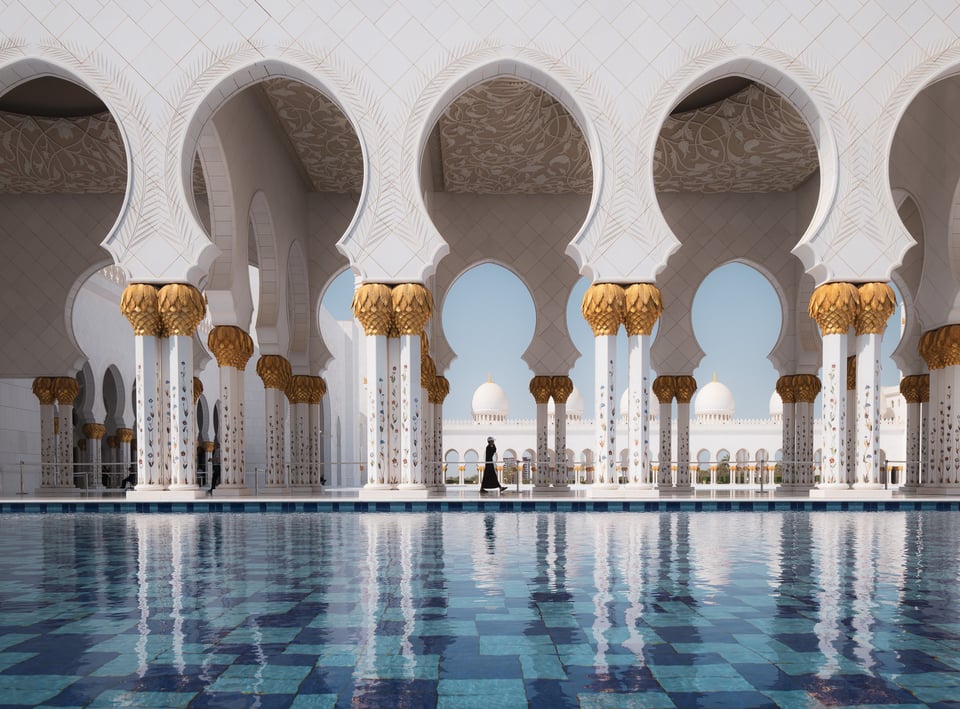 NIKON D780 + Tamron 17-35mm f/2.8-4E @ 25mm, ISO 100, 1/400, f/9.0
NIKON D780 + Tamron 17-35mm f/2.8-4E @ 25mm, ISO 100, 1/400, f/9.0
تعليق
-
من ناحية تجريبية، فإن صور DSLR ليست أفضل. حسنًا، إذا قمت بتصوير كاميرا DSLR في عرض مباشر - أو، على سبيل المثال، قمت بنزع المرآة - فأنت تقوم بالفعل بالتصوير بفعالية باستخدام كاميرا بدون مرآة. أضمن أنه لا يوجد شخص يقرأ هذا المقال يمكنه التمييز بشكل موثوق بين صورة DSLR وصورة بدون مرآة في اختبار جنبًا إلى جنب (بالنظر إلى نفس المستشعر، مثل Nikon D780 وZ6 II).
ولكن، بطريقة ما، فإن الشعور بأن "صور DSLR تبدو أفضل" يبدو أكثر صدقًا مما ينبغي، خاصة بالنسبة لبعض المصورين ومحبي DSLR. عندما أحول عيني، أستطيع أن أرى ذلك أيضًا: ربما انخفض متوسط جودة الصور في عصر عدم وجود مرايا، حتى عند النظر إلى أعمال نفس المصورين.
كاميرا نيكون D800E + 70-200 مم f/4 @ 86 مم، ISO 100، 1/10، f/16.0
On one hand, empirically, DSLR photos aren’t any better. Heck, if you shoot a DSLR in live view – or, say, rip out the mirror – you’re already effectively shooting with a mirrorless camera. I guarantee there’s not a person reading this article who can reliably tell the difference between a DSLR photo and a mirrorless photo in a side-by-side test (given the same sensor, like the Nikon D780 vs Z6 II).
But, somehow, the “DSLR photos look better” sentiment feels truer than it should, especially to some photographers and DSLR holdouts. When I squint, I can see it too: that perhaps the average quality of photos has gone down in the mirrorless age, even looking at work from the same photographers.
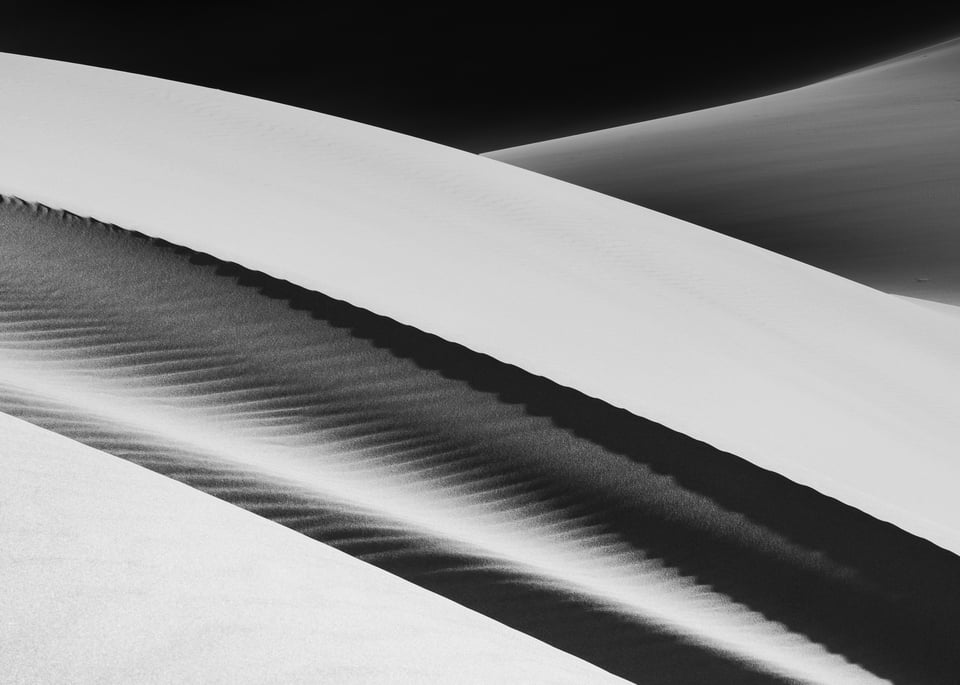 NIKON D800E + 70-200mm f/4 @ 86mm, ISO 100, 1/10, f/16.0
NIKON D800E + 70-200mm f/4 @ 86mm, ISO 100, 1/10, f/16.0
تعليق
-
إذا كان هذا صحيحًا، فلا علاقة له باختلافات أجهزة الاستشعار. وأي اختلاف سيكون نتيجة للعملية. إنه نفس السبب الذي يجعلني لم ألتقط صورة لائقة بهاتفي مطلقًا، على الرغم من أن العديد من المصورين الآخرين فعلوا ذلك. بكل بساطة، أنا لا أبذل الجهد المناسب، لأنني أستخدم هاتفي كأداة لالتقاط الصور السريعة ولا شيء غير ذلك.
تعد الكاميرات التي لا تحتوي على مرايا اليوم أكثر كفاءة من كاميرات DSLR. كما أنها أسهل في حملها واستخدامها في سير العمل المحمول. إنها تحفز إنتاج الصور ومشاركتها بشكل أسرع وأكثر. كان معدل 11 إطارًا في الثانية يمثل سرعة رائدة في عالم الكاميرات الرقمية ذات العدسة الأحادية العاكسة (DSLR)، والآن، عندما تتباهى الكاميرا غير المزودة بمرآة للمبتدئين بهذا الرقم، فإنني أسمي الكاميرا غير ملهمة.
لقد أذهلني تعليق أحد القراء على إحدى مقالات ليبور الأخيرة: "لقد سألت: كم مرة أخرج الكاميرا الخاصة بي؟ الجواب: بالنسبة لي لقد مرت أشهر. لدي تراكم يصل إلى 50 ألفًا من ملفات NEF غير المعالجة؛ بالإضافة إلى آلاف الصور الموروثة من أحد الأقارب المتوفين. بصراحة أنا غارق في الأعمال المتراكمة ".
التخمة حقيقية. يمنعنا من الخروج وممارسة التصوير الفوتوغرافي؛ إنه يغلقنا. أو، إذا لم يوقفنا ذلك، فإنه يقودنا إلى إعطاء كل صورة اهتمامًا أقل مما تستحق، نظرًا لأننا نعمل مع عدد كبير جدًا من الصور في المجمل.
NIKON D800E + 24 مم f/1.4 @ 24 مم، ISO 100، 0.6 ثانية، f/16.0
If that’s true, it has nothing to do with sensor differences. Any difference would be the result of process. It’s the same reason why I’ve never once taken a decent photo with my phone, even though many other photographers have. Quite simply, I don’t put in the right effort, since I use my phone as a tool for quick snapshots and nothing else.
Today’s mirrorless cameras are more competent than DSLRs. They are also easier to carry along and use in a mobile workflow. They incentivize faster, more image production and sharing. 11 FPS used to be flagship-level speed in the DSLR world, and now, when an entry-level mirrorless camera boasts that number, I call the camera uninspiring.
I was struck by a reader’s comment on one of Libor’s recent articles: “You asked: How often do I take out my camera? Answer: For me it has been months. I have a backlog of 50K unprocessed NEFs to go through; plus thousands of inherited photos from a dead relative. Frankly I’m overwhelmed by the backlog.”
The glut is real. It stops us from going out and practicing photography; it shuts us down. Or, if it doesn’t shut us down, it leads us to give each photo less attention than it deserves, since we’re working with so many photos in total.
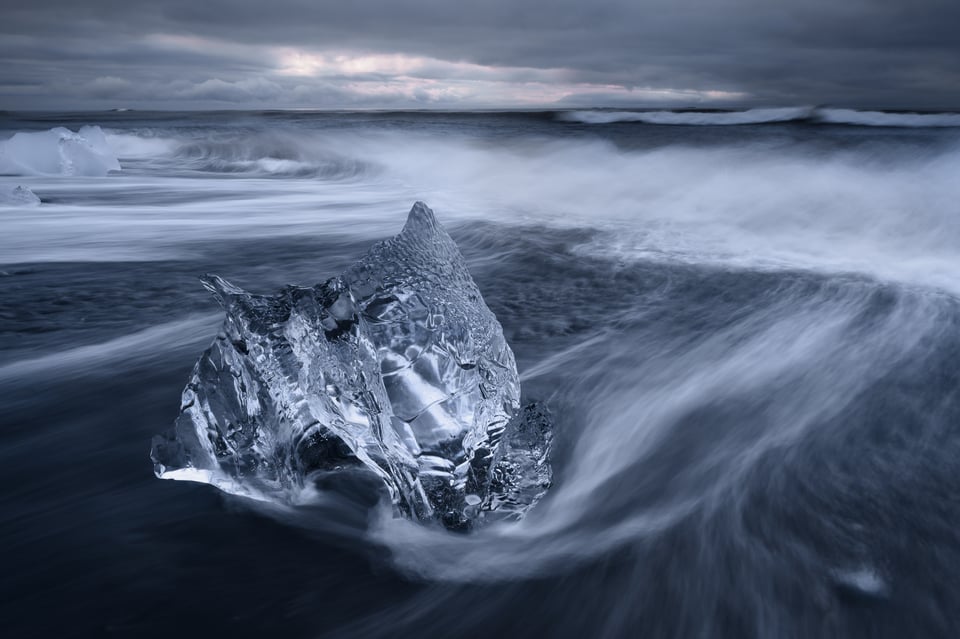 NIKON D800E + 24mm f/1.4 @ 24mm, ISO 100, 0.6 seconds, f/16.0
NIKON D800E + 24mm f/1.4 @ 24mm, ISO 100, 0.6 seconds, f/16.0
تعليق
-
يمكن أن تؤدي كاميرات DSLR إلى هذه المشكلة أيضًا، لكنني أشك في أنني وحدي الذي أدرك أنني ألتقط عددًا أكبر من الصور بدون مرآة في نزهة نموذجية مقارنة بما فعلته باستخدام كاميرا DSLR. أقوم بإخراج الكاميرا غير المزودة بمرآة في كثير من الأحيان في المقام الأول، لأنها أقل إزعاجًا - وفي كل مرة أفعل ذلك، ألتقط صورًا أكثر مما كنت أفعل من قبل.
بمعنى آخر، تكون "تكلفة الصورة" أقل مع الكاميرات غير المزودة بمرآة مقارنة بكاميرات DSLR. ولا تحتوي كاميرا Nikon Z9 على غالق ميكانيكي، وبالتالي لا داعي للقلق بشأن تعطل الكاميرا عند عدة مئات الآلاف من اللقطات.
هذه ليست شكوى، في الغالب. يسعدني أن التصوير الفوتوغرافي أصبح ميسور التكلفة ويمكن الوصول إليه هذه الأيام؛ كما أصبح التجريب أكثر جدوى، وأصبح التقاط الموضوعات الصعبة مثل الطيور أثناء الطيران أسهل من أي وقت مضى.
كاميرا NIKON Z 7 + 100 مم f/2.8 @ 100 مم، ISO 125، 1/640، f/6.3
DSLRs can lead to this problem, too, but I doubt I’m alone in realizing that I take more photos with mirrorless on a typical outing than I did with a DSLR. I pull my mirrorless camera out more often in the first place, since it’s less hassle – and each time I do, I take more photos than I would before.
In other words, the “cost of a photo” is even lower with mirrorless than it was with DSLRs. The Nikon Z9 doesn’t even have a mechanical shutter, and so you don’t have to worry about the camera failing at several hundred thousand shots.
This isn’t a complaint, for the most part. I’m thrilled that photography is more affordable and accessible these days; experimentation is also more feasible, and difficult subjects like birds in flight are easier to capture than ever before.
 NIKON Z 7 + 100mm f/2.8 @ 100mm, ISO 125, 1/640, f/6.3
NIKON Z 7 + 100mm f/2.8 @ 100mm, ISO 125, 1/640, f/6.3
تعليق
-
لكنها تجربة مختلفة للتصوير الفوتوغرافي. بطريقة ما، تمت إزالة مطب السرعة. مع تقنية بدون مرآة، إذا كنت لا تفكر بوعي في إبطاء السرعة والتقاط أفضل صورة ممكنة، فمن الأسهل التقاط صور "صدفة" - والكثير منها. من السهل أيضًا قضاء وقت غير كافٍ في مرحلة ما بعد المعالجة لصورك الأفضل، حيث أن لديك مساحة أكبر لتغطيتها ودائمًا المزيد من الصور التي تحتاج إلى معالجتها.
ولهذا السبب، على الرغم من أن جودة الصورة بدون مرآة تتطابق مع جودة كاميرات DSLR أو تتجاوزها، إلا أن جودة الصورة قد لا تتطابق. لا أعتقد أن هذا يجب أن يخيفك من التبديل؛ في الأيدي اليمنى، يمكن أن تسمح لك التكنولوجيا الأفضل للكاميرات غير المرآة بتوسيع عملك وربما تحسينه. ومع ذلك، فإن الحصول على صور أفضل ليس أمرًا حتميًا لمجرد أن معداتك أحدث أو تحتوي على مواصفات أفضل.
NIKON Z 7 + NIKKOR Z مقاس 14-30 مم f/4 S @ 18.5 مم، ISO 64، 20 ثانية، f/5.0
But it’s a different experience of photography. In a way, a speed bump has been removed. With mirrorless, if you don’t consciously think about slowing down and taking the best possible photo, it’s easier to take “happenstance” pictures – and a lot of them. It’s also easy to spend insufficient time post-processing your better photographs, since you have more ground to cover and always more photos to process.
That’s why, even though the image quality of mirrorless matches or exceeds that of DSLRs, the quality of an image may not. I don’t think this should scare you away from switching; in the right hands, the better technology of mirrorless cameras can allow you to broaden and maybe even improve your work. However, better photos aren’t inevitable just because your gear is newer or has better specs.
 NIKON Z 7 + NIKKOR Z 14-30mm f/4 S @ 18.5mm, ISO 64, 20 seconds, f/5.0
NIKON Z 7 + NIKKOR Z 14-30mm f/4 S @ 18.5mm, ISO 64, 20 seconds, f/5.0
تعليق
-
تجربة التصوير الفوتوغرافي
هل تتذكر تلك الإعلانات التشويقية واسعة الانتشار لكاميرا Nikon Df قبل الإعلان عنها رسميًا؟ مصور المناظر الطبيعية الوحيد في وسط لا يعرف أين، ربما اسكتلندا، في سلام، حيث التقط صورة من خلال عدسة الكاميرا. "التصوير الفوتوغرافي النقي"، "لا فوضى، لا تشتيت الانتباه" - لقد لفتت تلك الإعلانات التشويقية الانتباه. وتكهن المصورون بأن جهاز Df لن يحتوي على شاشة LCD خلفية، أو أنه سيستخدم الأقراص في كل شيء ويزيل القائمة. لا أعتقد أنني قمت بتحديث شائعات نيكون كثيرًا.
لم يلبي الإصدار النهائي لـ Df تلك التوقعات السامية، ولكن هذا ليس هو الهدف. ما تطرقت إليه شركة نيكون، ربما دون أن تدرك ذلك، هو أهمية تجربة التصوير الفوتوغرافي.
تعمل شركة Leica على شيء ما هنا من خلال تسويقها أيضًا. لا يقتصر الأمر على جودة الصورة أو الميزات التي تهم الكاميرا. هناك أيضًا الشرارة التي تجعلك ترغب في التقاط الكاميرا في المقام الأول وتتطلع حقًا إلى التقاط الصور.
NIKON Z 7 + NIKKOR Z مقاس 14-30 مم f/4 S @ 14 مم، ISO 64، 8 ثوانٍ، f/13.0
The Experience of Photography
Do you remember those viral teasers for the Nikon Df before it was officially announced? A lone landscape photographer in the middle of who knows where, Scotland maybe, at peace as he took a photo through the camera’s viewfinder. “Pure photography,” “No clutter, no distractions” – man did those teasers draw attention. Photographers speculated that the Df wouldn’t have a rear LCD, or that it would use dials for everything and eliminate the menu. I don’t think I’ve ever refreshed Nikon Rumors so often.
The Df’s eventual release didn’t meet those lofty expectations, but that’s beside the point. What Nikon had touched on, maybe without realizing it, was the importance of the experience of photography.
Leica is onto something here with their marketing, too. It’s not just image quality or features that matter in a camera. There’s also the spark that makes you want to pick up the camera in the first place and really look forward to taking pictures.
 NIKON Z 7 + NIKKOR Z 14-30mm f/4 S @ 14mm, ISO 64, 8 seconds, f/13.0
NIKON Z 7 + NIKKOR Z 14-30mm f/4 S @ 14mm, ISO 64, 8 seconds, f/13.0
تعليق
-
أنا لا أقول أن المصدر الوحيد المحتمل لـ "الشرارة" هو الكاميرا نفسها - أو أن كاميرا DSLR تحتوي على تلك الشرارة، بينما لا تحتوي الكاميرا بدون مرآة. أعرف الكثير من المصورين عديمي المرايا الذين يشعرون بحماس أكبر تجاه التصوير الفوتوغرافي أكثر من أي وقت مضى باستخدام كاميرا DSLR، لأنهم يتطلعون الآن إلى أخذ معداتهم خفيفة الوزن إلى أماكن لن يذهبوا إليها أبدًا باستخدام مجموعة أكبر حجمًا.
لكن بالنسبة لبعض المصورين، يعد "إبراز الكاميرا الكبيرة" و"التعامل معها ببطء" جزءًا من عملية التصوير الفوتوغرافي. أعلم أنني هكذا، وربما أكثر من اللازم. إذا كنت قد قرأت Photography Life بانتظام، فربما تعلم أنني كنت أستخدم كاميرات ذات تنسيق كبير وكبير جدًا في معظم صوري الفوتوغرافية الحديثة للمناظر الطبيعية. غالبًا ما أستخدم هذه الكاميرات بدلاً من الكاميرات الرقمية، لأسباب تتعلق بجودة الصورة بشكل عرضي فقط. السبب الرئيسي هو أنني وجدت عملية أعشقها، مما يجعلني متحمسًا لالتقاط الصور مرة أخرى.
شامونيكس 4×5، نيكور 90 ملم f/8 @ f/22، 1/60 ثانية. كوداك بورترا 160. لا يوجد مرشحات، بعض الميل الخلفي.
I’m not saying that the only possible source of the “spark” is the camera itself – or that a DSLR has that spark, and mirrorless doesn’t. I know plenty of mirrorless photographers who feel more enthusiastic about photography than they ever did with a DSLR, because now they look forward to taking their lightweight gear places they would never go with a bulkier kit.
But for some photographers, “bringing out the big camera” and “taking it slow” are part of their process of photography. I know I’m like that, maybe even too much. If you’ve read Photography Life regularly, you probably know that I’ve been using large and ultra-large format cameras for most of my recent landscape photography. I’m often using these cameras instead of digital, for reasons that are only tangentially related to image quality. The main reason is that I’ve found a process I adore, that makes me excited to take pictures again.
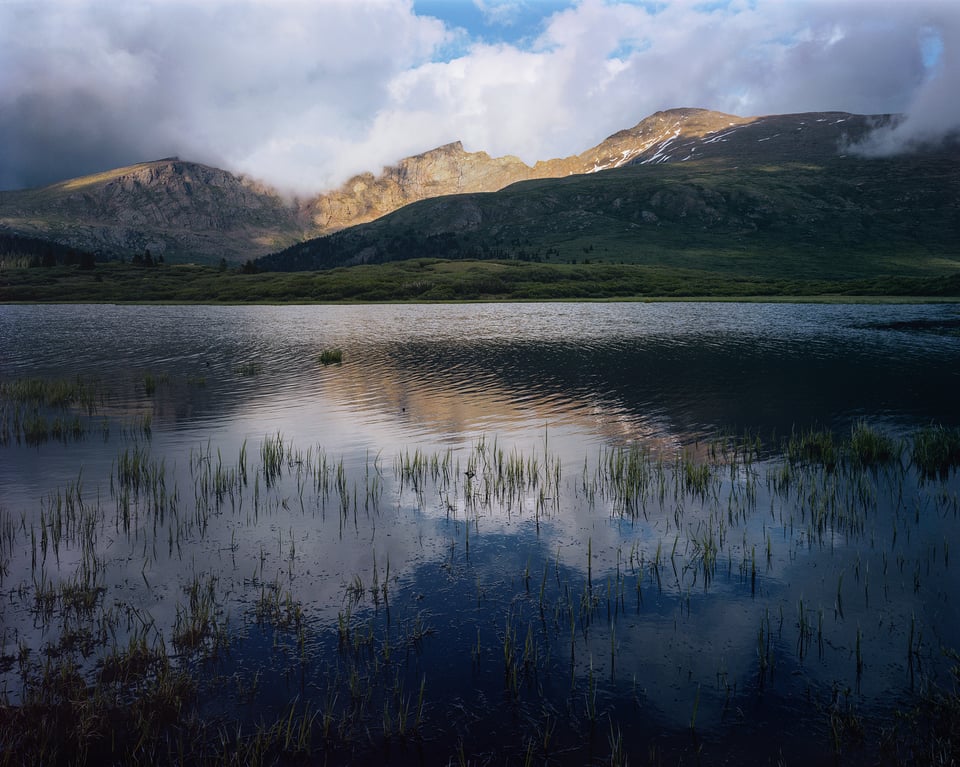 Chamonix 4×5, Nikkor 90mm f/8 @ f/22, 1/60 second. Kodak Portra 160. No filters, some rear tilt.
Chamonix 4×5, Nikkor 90mm f/8 @ f/22, 1/60 second. Kodak Portra 160. No filters, some rear tilt.
تعليق
-
هناك دافع نادرًا ما يتم التحدث عنه وراء معظم المناقشات حول معدات الكاميرا: أن الهدف النهائي هو الحصول على أخف مجموعة ممكنة تتفوق في ما تصوره. هذا هدف معقول يجب السعي لتحقيقه، وهو شيء تعمله المرايا بشكل جيد. لكنه ليس الاتجاه اللائق الوحيد الذي يمكنك اتباعه كمصور.
في بعض الأحيان، من الأفضل أن تستهدف عملية تستمتع بها، حتى على حساب وزن الكاميرا أو ميزاتها أو سرعتها. ولا يمكن إنكار أن العملية تختلف بين التصوير بكاميرا بدون مرآة مقارنة بكاميرا DSLR. هناك اختلاف في عدسة الكاميرا، وهناك أيضًا اختلاف في الوقت والجهد الذي يستغرقه استخدام الكاميرا (مع بذل جهد أقل لا يكون دائمًا تجربة أكثر متعة).
إذا وجدت إيقاعك كمصور فوتوغرافي بكاميرات DSLR، فأعتقد أن التحول إلى الكاميرات غير المزودة بمرآة قد يكون أمرًا خاطئًا بالنسبة لك. للحصول على حقيبة أخف ومجموعة من الميزات التي نادرًا ما تستخدمها، هل يستحق الأمر التخلي عن تلك الشرارة؟ بالتأكيد لا. بالنسبة للعديد من المصورين، تُحدث "تجربة التصوير الفوتوغرافي" فرقًا أكبر في جودة صورهم مقارنة بمجموعة ميزات الكاميرا، لأنها عامل أكثر مباشرة في مدى استمتاعهم بالتقاط الصور وعدد مرات القيام بذلك.
كاميرا نيكون D800E + 105 مم f/2.8 @ 105 مم، ISO 200، 1/320، f/5.6
There’s a rarely-spoken impulse behind most discussions about camera equipment: that the ultimate goal is to get the lightest possible kit that excels at what you photograph. That’s a reasonable goal to aim for, and it’s something that mirrorless does well. But it’s not the only decent direction you can take as a photographer.
Sometimes, it’s better to aim for a process that you enjoy, even at the expense of the camera’s weight, features, or speed. And there’s no denying that the process is different between shooting with a mirrorless camera compared to a DSLR. There’s the difference in the viewfinder, for one, and there’s also the difference in the time and effort it takes to use the camera (with less effort not always being a more enjoyable experience).
If you’ve found your rhythm as a DSLR photographer, I think switching to mirrorless may be wrong for you. To gain a lighter bag and a set of features you’ll rarely use, is it worth giving up that spark? Surely not. To many photographers, the “experience of photography” makes a bigger difference to the quality of their photos than the camera’s feature set, because it’s a more direct factor in how much they enjoy taking pictures, and how often they do so.
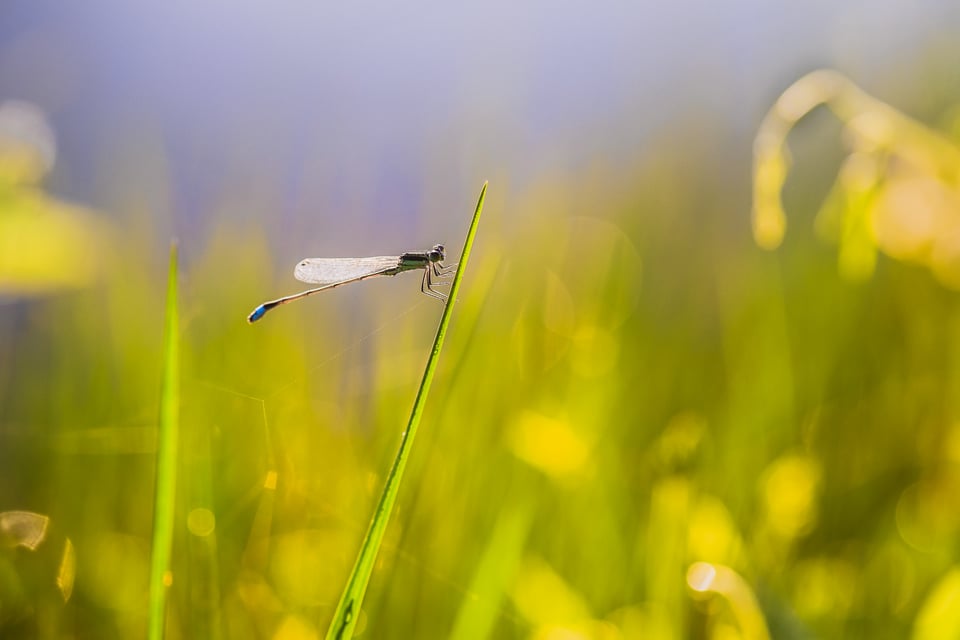 NIKON D800E + 105mm f/2.8 @ 105mm, ISO 200, 1/320, f/5.6
NIKON D800E + 105mm f/2.8 @ 105mm, ISO 200, 1/320, f/5.6
تعليق
-
الاستنتاج و التوصيات
الكاميرات عديمة المرآة هي الحاضر الساحق. ستأتي كاميرات DSLR الجديدة الوحيدة من شركة Pentax إذا وجدت شركة Ricoh أن السوق كبير بما يكفي لمواصلة تصنيعها. إذا كنت تنوي الحصول على كاميرا جديدة ومحسنة، أو كنت بحاجة إلى استبدال الكاميرا القديمة، فإن الكاميرا بدون مرآة هي الحل الأمثل هذه الأيام.
لكن هذه المقالة لا تستهدف المصورين الذين يحتاجون باستمرار إلى أحدث المواصفات في العالم لعملهم - وقد تحول معظمهم إلى استخدام الكاميرات غير المزودة بمرآة بالفعل. بدلاً من ذلك، فهو يستهدف المصورين الذين يستخدمون كاميرا DSLR في الوقت الحالي، ويشاهدون جميع أنواع العناوين الرئيسية حول الميزات غير المرآة، ويتساءلون عما إذا كان الوقت قد حان لإصلاح مجموعة DSLR التي تعجبهم على نطاق واسع. جوابي هو لا.
إذا كنت لا تزال تلتقط الصور باستخدام كاميرا DSLR وتستمتع بها، فلن تحتاج إلى الاشتراك في هذه الضجة والتبديل. ربما تحتاج إلى قبول أن تطوير الكاميرات الرقمية ذات العدسة الأحادية العاكسة (DSLR) لن يتقدم كثيرًا في المستقبل، ولكن هذا ليس سيئًا للغاية إذا تم تطويرها بالفعل بما يكفي لتلبية احتياجاتك.
إذا قمت بالتبديل إلى الكاميرا غير المزودة بمرآة، فلن يتم ضمان تحسن "جودة الصور" على الإطلاق، حتى لو كانت الكاميرا تحتوي على ميزات أفضل. أقول إنه يجب عليك العثور على العملية التي تناسبك، والتمسك بها، وعدم القلق كثيرًا بشأن المعدات. هذه هي الطريقة الأسهل للتخلص من قطار الإعلانات/الضجيج وتركيز انتباهك على التصوير الفوتوغرافي الفعلي.
كاميرا نيكون D800E + عدسة 70-200 مم f/4 @
Conclusion and Recommendations
Mirrorless cameras are the overwhelming present. The only new DSLRs will come from Pentax if Ricoh finds the market big enough to keep making them. If you’re intent on getting a new and improved camera, or you need to replace your old camera, mirrorless is the way to go these days.
But this article is not targeted at photographers who constantly need the newest specs in the world for their work – most of whom have switched to mirrorless already. Instead, it’s targeted at photographers who use a DSLR at the moment, see all sorts of headlines about mirrorless features, and wonder if it’s time to overhaul a DSLR kit that they’re broadly happy with. My answer is no.
If you still shoot with a DSLR and enjoy it, you don’t need to buy into the hype and switch. You probably do need to accept that DSLR development won’t go much further in the future, but that’s not so bad if it’s already developed enough for your needs.
If you switch to mirrorless, your “quality of images” isn’t guaranteed to improve at all, even if the camera has better features. I say you should find a process that works for you, stick with it, and not worry so much about gear. That’s the easiest way to jump off the advertising/hype train and focus your attention on actual photography.
 NIKON D800E + 70-200mm f/4 @
NIKON D800E + 70-200mm f/4 @
تعليق
-
ماذا لو كنت قد تحولت بالفعل إلى نظام بدون مرآة، وكنت تقرأ هذه المقالة من أجل المتعة فقط؟ جيد لك، جيد عليك. أظن أنك قمت بالتبديل لسبب ما، وبالنسبة لمعظمكم، ربما تجاوز الأداء العالي للكاميرات غير المزودة بمرآة اليوم توقعاتكم.
لقد فعلت ذلك بالنسبة لي. أنا أعشق مجموعة الأفلام ذات التنسيقات الكبيرة وبدون مرآة نظرًا للمرونة وجودة الصورة والمعالجة التي أحصل عليها هذه الأيام. لكن في الوقت نفسه، كان عليّ أن أكون حذرًا من التباطؤ والتفكير في صوري حتى لا ألتقط الكثير من اللقطات التي تشبه الهاتف الذكي باستخدام هاتف Z7.
NIKON Z 7 + NIKKOR Z مقاس 20 مم وبفتحة f/1.8 S @ 2
What if you’ve already switched to mirrorless, and you’re just reading this article for fun? Good on you. I suspect you switched for a reason, and for most of you, the high performance of today’s mirrorless cameras has probably exceeded your expectations.
It did for me. I adore my mirrorless + large format film kit for the flexibility, image quality, and process I’m getting these days. But at the same time, I’ve had to be mindful of slowing down and thinking through my photos so that I don’t take too many smartphone-style snapshots with my Z7.
 NIKON Z 7 + NIKKOR Z 20mm f/1.8 S @ 2
NIKON Z 7 + NIKKOR Z 20mm f/1.8 S @ 2
تعليق
-
في التعليقات، أود أن أسمع منك إذا كنت لا تزال تقوم بالتصوير باستخدام كاميرا DSLR. هل تشعر أنك متخلف عن كل المحتوى الذي لا يحتوي على مرآة عبر الإنترنت هذه الأيام؟ أم أن "القفز من قطار الضجيج" يمنحك مزيدًا من الوقت للخروج والتقاط الصور والرضا عن المعدات التي لديك بالفعل؟ أنا متأكد من أن تكلفة التبديل تلعب دورًا بالنسبة للعديد من المصورين، ولكن ليس جميعهم تقريبًا؛ لا تزال كاميرا DSLR هي الأداة المفضلة للعديد من المحترفين وغيرهم. إذا كان هذا يشملك، آمل أن يكون هذا المقال قد أعطاك فكرة أفضل عن الوقت الذي قد يحين فيه وقت التبديل، ومتى يحين وقت البقاء.
لقد توقعت أن تحظى هذه المقالة بشعبية إلى حد ما، نظرًا لأن المناقشات حول المعدات والكاميرات عديمة المرآة مقابل الكاميرات ذات العدسة الأحادية العاكسة (DSLR) على وجه الخصوص عادةً ما تكون كذلك! ومع ذلك، فقد تجاوز عدد التعليقات توقعاتي. لا أستطيع الرد على كل تعليق تلقيته هذه المرة، لكنني أقرأها كلها وأنا ممتن للردود المثيرة للاهتمام والمدروسة حتى الآن.
In the comments, I’d like to hear from you if you still shoot with a DSLR. Are you feeling left behind with all the mirrorless content online these days? Or, is “jumping off the hype train” giving you more time to go out and shoot, and be satisfied with the gear you already have? I’m sure the cost of switching plays a role for many photographers, but hardly all of them; the DSLR is still the tool of choice for many professionals and others. If that includes you, I hope this article gave you a better sense of when it might be time to switch, and when it’s time to stay.
I expected this article to be somewhat popular, because gear discussions and mirrorless vs DSLR in particular usually are! Even so, the number of comments has outpaced my expectations. I can’t respond to every comment I got this time, but I’m reading all of them and am grateful for the interesting and thoughtful responses so far.
تعليق


تعليق